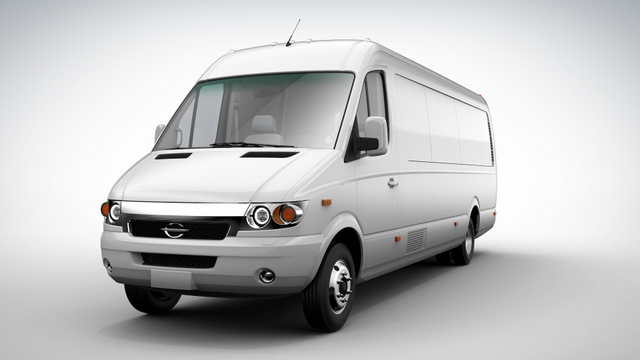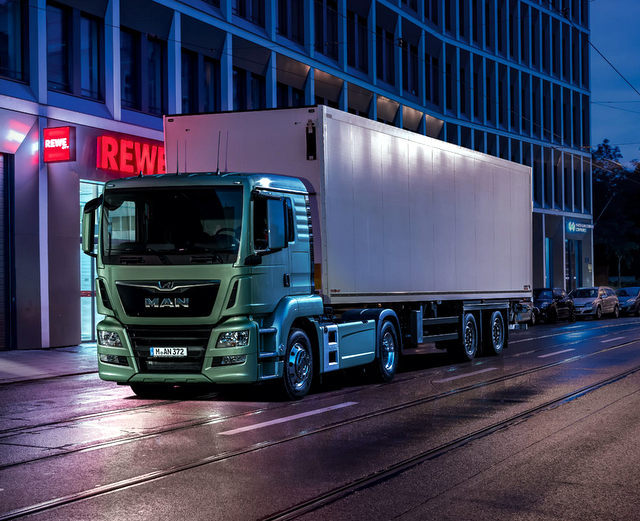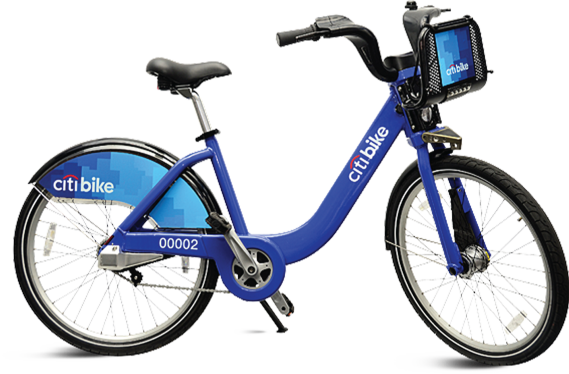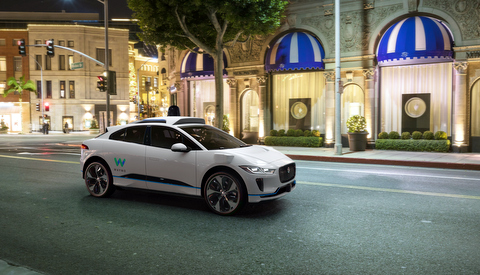Electric & Autonomous Options Explored
Electric vehicles may be poised to make inroads in commercial fleets, while cities may need to be redesigned to be more people-centric and less car-oriented with autonomous vehicles replacing personal cars. Those were some of the big-takeaways from a recent conference that looked at some future impacts of changes in the transportation industry.
The Verge Conference and Expo took place on October 16-18, 2018, in Oakland, California. The annual event, presented by GreenBiz, brings together experts from companies and utilities, city and regional governments, policy makers, NGOs, solution providers and startups, who are working to move to scalable and sustainable technologies and solutions. Through panels, presentations and abundant networking opportunities, thousands of attendees learn what’s going on and find areas for collaboration.
Three Conferences in One
The activities are broken into three concurrent conferences – Circular, Energy, and Transport. I chose the Transport conference and attended three panels:
- Why Early Adopters are Electrifying Fleets
- Cities Embrace Slow Moving, Electric & Autonomous
- Designing Cities for Autonomous & On-Demand
I also sat in the Verge Accelerate Transport Showcase, which featured six startup companies presenting in 2-1/2-minute sessions.

Another session called Creating a Clean Economy for All focused on developing sustainable transit options for disadvantaged people in Fresno.
Networking and visiting expo booths turned up some interesting information. Sioneer, for example, is a company in Great Falls, Virginia, that recycles glass 100 percent (apparently this isn’t common). The Bay Area Quality Management District booth featured new low-cost loan programs to help businesses afford improvements to reduce greenhouse gas emissions.
An inspirational presentation by Golden State Warriors Head Coach Steve Kerr and an acapella concert by a fine group of young local singers called Vocal Rush rounded out the day.
Why Early Adopters are Electrifying Commercial Fleets
In this panel, representatives from Thor Trucks, UPS and the North American Council for Freight Efficiency discussed challenges and solutions they’ve found so far in working to integrate electric vehicles into commercial fleets.
The panelists all agreed on the need to electrify their fleets. Mike Roeth, executive director of the North American Council for Freight Efficiency, highlighted high fuel costs for diesel today:
“There are two million semis in the country, averaging 6-8 miles per gallon,†he said. “That’s $70K a year per truck for fuel alone!â€

One major issue is building a new charging infrastructure. Tamara Barker, UPS’s Chief Sustainability Officer and VP of its US Engineering Dept, said the issues for UPS’s fleet are the same as they are for car customers—charging infrastructure and range.
“Running new wiring to power an EV fleet means collaborating with utilities to lower costs,†Barker said. “We need a Smart grid on one centralized system based on vehicle need.â€
Some routes are not yet suited for the limited range of EVs. Barker has trucks in 220 countries and territories, so there’s no one solution that will work for all.
“We’re looking for the right situations – high density, fewer miles, and appropriate routes,†she said.
Cost is another factor. Per Roeth, electric vehicles are less expensive to operate, but have higher upfront costs.
“EV trucks are cheaper, but it’s taking a long time for Industry to understand it and ring the cash register on it.†Of course, there are not many electric trucks on the market yet, either.
Electrification has moved more slowly to commercial applications. Dakota Semler, the founder and CEO of electric truck company Thor, used to run a fleet. He noticed that while electric car sales were growing, nobody was doing commercial vehicles, so Thor stepped in. Thor is now collaborating with UPS.
Roeth thinks that EV trucks are elegantly simple for technicians to work on compared to diesel-powered ones, but technicians still need training to deal with electricity instead of liquid fuels.

“Training, maintenance, and partnering with leaders will help move the industry to electrification. We need to educate drivers, dock loaders, and facility workers,†he said.
Some small and medium-size fleets don’t have time to deal with the complex process of transition to electric, even if it’s less expensive in the long run.
“That’s because they wear many hats,†said Semler. “Thor is stepping in to make it work.â€
So, what’s the best plan for making the transition? Roeth suggests employing EV trucks for medium-duty applications in urban areas, running one shift, so they can use smaller batteries and have enough time to recharge. “Start simple, move fast, share info, then build and build,†he says.
Barker agrees about developing the medium-duty vehicles first and summed up the presentation this way: “Working with utilities and careful collaboration will be necessary to speed adoption of electric vehicles.â€
For much more information, see the the UPS/Greenbiz study.
Cities Embrace Slow Moving, Electric & Autonomous
This panel addressed changes we can make to urban centers to make them more livable and cleaner. This could mean, for example, using bicycles and scooters instead of cars for some trips. Or, it could involve running autonomous shuttles, replacing buses, and creating zones for low-speed neighborhood EVs.
The four panelists offered various reasons and options.

Ross Atherton is Vice President and General Manager of Club Car Business, a consumer business startup for neighborhood electric vehicles (NEVs). NEVs run up to 25 miles per hour and are used in limited areas. He wants to form partnerships to get NEVs in place and have clear rules to accelerate their use.
Christian Horvath is a Redondo Beach council member and mayor pro tem. He’s interested in finding urban transportation solutions. He believes we need to think ahead, bring people along to where we’re going, and explain why we need to go there.
Gabe Klein is a mobility startup veteran and former commissioner of the Chicago and Washington DC Departments of Transportation. He founded Cityfi to educate city leaders and CEOs on the changes in 21st century transportation. He believes that personal/shared/electric mobility is the future, and will be cheap, easy, and frictionless.
Michael Jones is the founder of Alta Planning + Design. He’s an expert in micromobility (bike sharing) and bicycle, pedestrian and trail planning and design. He believes that tech is outpacing policy and regulations, and that we must start to allow new options, such as a green mobility corridor for slow-moving vehicles.
The panel started with autonomous vehicles (AV).
“It’s coming and will be game-changing for how we view roads,†said Horvath. “Gigabit broadband in the community will connect all businesses.â€
Klein suggested reformatting the right of way and making it low-speed, around 12-13 mph.
“At some point, autonomy lets you lose the stop signs–you don’t need to go fast,†he said. “And once we don’t need massive parking garages downtown, we could convert them to low-income housing.â€

Jones prefers using autonomous shuttles over privately owned cars. “An AV learns loop routes and will improve safety and reduce vehicle miles and trips,†he said. “A healthy city means people out walking and biking.†He suggests parking cars in remote areas and redesigning streets and business districts.
Jones looked at the shared bike market and compared docked versus dockless bikes. Klein noted that docked bikes were in and out of fashion. Dockless systems drastically lower the cost, and when you add cheap bikes, it changes everything.
“It’s hard to tell what’s up in the future,†said Jones. “It’s not in public’s interest to have a monopoly, because then prices will start to go up.â€
Klein made the point that public transportation hasn’t made money traditionally and will only become profitable when there is massive use. “In a fractured market nobody can make any money,†he said.
Atherton, with a huge golf cart business, had a different perspective: “How can we remain altruistic while still creating competitive advantage?†he asked.
Jones suggested that competition creates innovation.
So, what does the future city look like?
Atherton suggested a mixed-use road with cars in the center, then parking, and slow travel on the outside, and stated that change will take time to develop—not like a startup.
Klein proposed neighborhood grids, eliminating left turns and through traffic, and building a flexible framework not dependent on the car.
Horvath proposed a shift to neighborhood-oriented development, since most trips now are less than three miles. The public and private sectors would have to work together.
Jones suggests getting rid of on-street parking and opening up the curbs for ridesharing and drop-offs. The issue is policy—control versus unregulated—public versus private. It was a fascinating look at a crucial area that will impact the way we live and how we reduce greenhouse gases.
Designing Cities for Autonomous & on-Demand
This panel brought together four experts to discuss how cities can plan for the changes coming with autonomous and on-demand vehicles. The panel was hosted by Katie Angotti of the San Francisco Municipal Transit Agency (Muni) and included four panelists.
Robin Chase is a transportation entrepreneur and cofounder and former CEO of Zipcar.
Gerry Tierney is associate principal and Mobility Lab co-director at Perkins + Will.
Sahar Shirazi is policy and planning lead, AVs and emerging mobility at WSP.
Swarna Ramanathan is associate partner for McKinsey & Co. and an auto engineer in the transportation and energy sector.
The panel first talked about what city structure has done so far to support ride hailing and autonomous vehicles. Tierney said that Los Angeles, New York, Seattle, and Portland were starting: “We are working on projects at Mission Rock and Treasure Island (Bay Area) that are giving priority to pedestrians first, then bikes and scooters, and cars last,†he said.

Shirazi noted that there was no longer a parking space minimum required for new buildings in downtown Oakland for buildings built within half a mile of quality transportation. “Mobility hubs are being discussed,†she added.
Ramanathan talked about how the Greenwich area of London was running private and public pilots of small shuttles, including autonomous deliveries of groceries. Cities and on-demand ride-hailing companies are beginning to partner to build digital and physical structures. Chase proposed having a common vision for AVs. “We need to resolve the double-parking problem,†she said.
Tierney noted that the city of Centennial (Denver area) started offering Lyft rides as part of the fare to solve “last half-mile issues†in their transit system. He also mentioned a local program in Monrovia, California, that combined Lyft vehicles and Lime bikes, was cheaper than a shuttle bus and was wildly popular.
Cities in the U.S. and around the world will have to change in the next five to 25 years as a transition to autonomous vehicles takes place. Ramanathan said it would vary depending on locale. “High-density cities with higher gross domestic product (GDP) will be more likely to adopt autonomous vehicles,†she said. “Cities with lower GDP will more likely use more shared vehicles, and cities with high GDP, but lower density, will experiment with electric vehicles and autonomous vehicles, but have less sharing.â€
Chase sees a lot of active transportation–walking and bikes, as well as micro vehicles such as e-scooters as a healthy future for cities.
Not everything will change, however.

“The future will look a lot like today, but enhanced and denser, as we reclaim space formerly used by cars,†said Tierney. “In theory, right-sized, compact AVs will use less asphalt and, if we can reduce fleet size through sharing, we could recapture up to 40 percent of the street for other uses.â€
How can cities provide clean and green transportation that’s accessible to all? Shirazi sees an opportunity with shared electric vehicles.
“We need to provide service to folks who are not tech savvy or are non-English speakers,†she said. She proposed measuring the health impacts of vehicles in cities.
How will AVs and on-demand transportation affect cities’ environmental goals?
“Autonomous vehicles must be electric, although it’s a complicated issue,†said Chase.
Tierney thinks that manufacturers expect that autonomous vehicles will likely be part of a subscription, rather than being purchased outright, and that companies will make five times the profit in that model. “The question is how to acclimate the consumer from a private to a subscription base,†he said.
Shirazi sees problems with private ownership of AVs, but also said that the subscription model can’t be taken for granted. “We have to consider equity and not hurt vulnerable people.â€
Cities are changing, and the panelists brought up a lot of things worth thinking about.
Verge Accelerate – New Companies with Fresh Ideas
The Verge Accelerate session, hosted by Shana Rappaport of Greenbiz and a two-person panel, provided a forum for representatives from six businesses to present 2-1/2-minute pitches to the audience. At the end, the audience voted to pick a winner.
The companies were:
EV Match–an app that provides charging access for EV drivers at people’s homes
Feros Freight Innovations–retrofits semi-trailers with batteries and charging ability
RNA Innovations–developed the Centriflow particulate filter for fuel systems to reduce pollution
Sepian Technologies–developed an advanced membrane for batteries, extending range and increasing efficiency
SinWaves–a cloud-based app that provides dynamic traffic light timing
KIGT–a public charging company
Each of the presentations was interesting in its own way, but when the votes were counted, Sepian Technologies was the winner!

3 thoughts on “Event: VERGE 2018 – A Business Approach to Sustainable Transport”